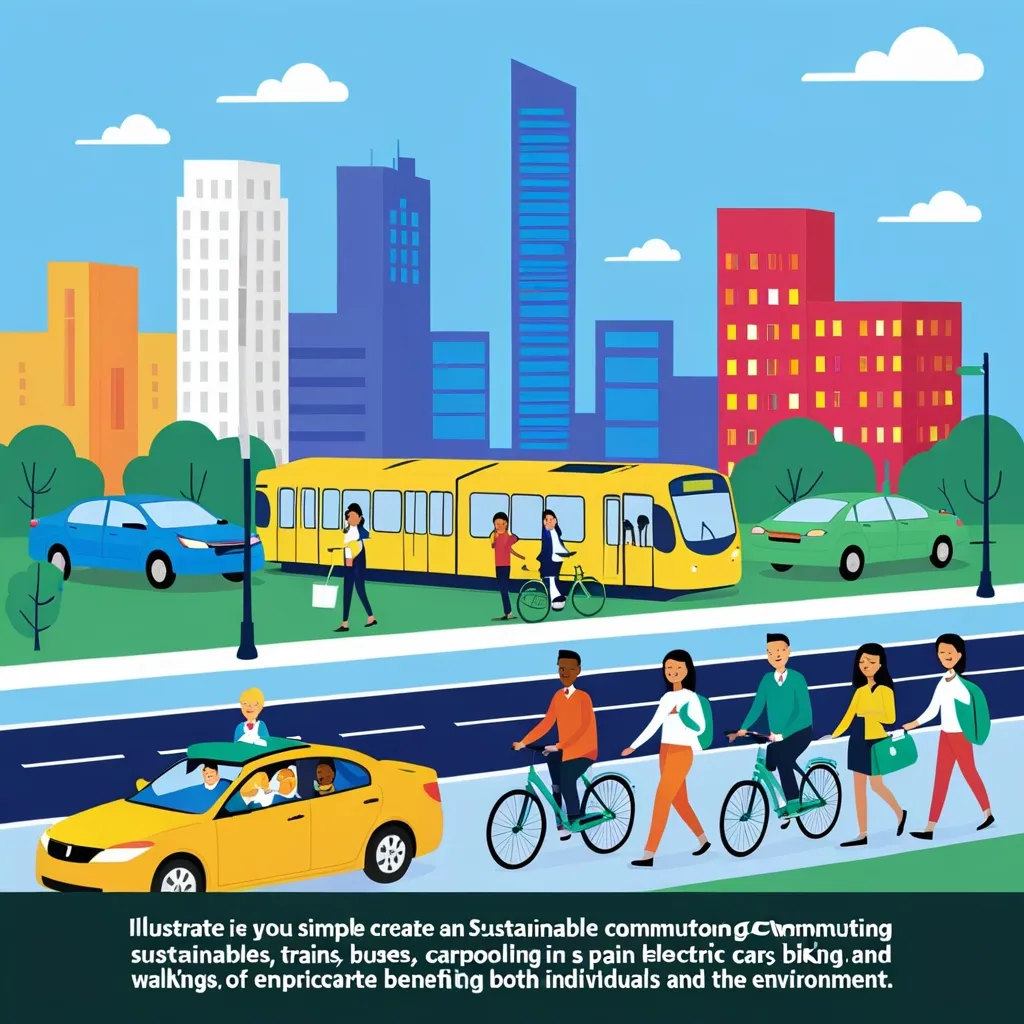In today’s world, we’re all starting to pay more attention to everyday habits and how they impact the environment. One of the biggest areas where we can make a change is in the way we commute. With traffic jams and rising fuel costs, finding sustainable ways to get to work is more crucial than ever. The easiest way to do this? Hop onto public transportation or team up for a carpool. Let’s break down how these options can benefit both the planet and your wallet.
First, let’s talk about public transportation. It’s a real game-changer if you ask me. When you choose to ride a bus, train, or subway, you’re not just saving cash—you’re cutting down on the number of cars clogging up the highways. Fewer cars mean less carbon dioxide, aiding the fight against climate change. Plus, many public transit systems now use renewable energy sources like wind or solar power, which is like a double win for the environment.
On a more practical note, taking public transit can simplify life. Imagine saying goodbye to the stress of constant traffic jams. Fewer cars on the road mean quicker, smoother commutes, and let’s be honest, who doesn’t need a stress-free start to their day? And if that’s not enough to convince you, think about the money. Yep, public transportation can save you some serious bucks. No more worries about gas prices, parking fees, or the never-ending maintenance your car demands.
Another cool thing? Many cities offer discounted or even free transit passes for regular riders. Some employers also sweeten the deal by providing free transit passes as part of their benefits package. Basically, switching to public transportation could be a win-win for both your peace of mind and your bank account.
Now, let’s switch gears to carpooling. This one’s a no-brainer. Sharing a ride with colleagues or neighbors not only tailors your commute to be more social but also slashes your carbon footprint and eases up on traffic congestion. It’s the essence of working smarter, not harder. Costs for gas can be shared among passengers, meaning more savings and less stress over fluctuating fuel prices.
And don’t overlook the social perks. Riding with others can turn an otherwise boring commute into a fun, interactive start or end to the day. Imagine catching up with friends or making new ones just because you share a common route. Building a community can be just what the doctor ordered for a more vibrant daily life.
Getting started with carpooling is easier than you might think. Thanks to technology, coordinating with potential carpool partners is just a few taps away. There are numerous apps and websites designed to connect you with people heading in the same direction. Whether it’s colleagues from the office or neighbors on your street, setting up a carpool is simple.
Employers can also make a huge difference here. Incentives like preferred parking spots for carpoolers or matching programs to find carpool partners within the company can genuinely motivate employees to take the plunge. It’s about creating a supportive environment where sustainable choices come naturally.
Sometimes, you can’t rely solely on public transportation or just carpooling. That’s okay. You can blend the two options. Think about carpooling to a nearby transit station and then catching your bus or train. This hybrid method helps you reap the benefits of both systems while minimizing any inconveniences.
Let’s not forget the health benefits. Sustainable commuting often involves a bit of physical activity, whether you’re walking to the transit station, biking part of the way, or cycling the entire distance. You’ll find that incorporating these small bursts of activity into your routine can make a big difference in how you feel overall. It’s about catching a breath of fresh air, getting some exercise, and arriving at work or home a little more invigorated.
Biking is a particularly great option if you live within a reasonable distance from your workplace. It’s an excellent form of exercise that also happens to be environmentally friendly. Many cities now offer bike-sharing programs, making it super easy to rent a bike for short commutes. This can be a very flexible and healthy alternative to driving.
Creating a culture around sustainable commuting isn’t just about personal choices; it’s about collective effort, too. Companies can lead by example, offering subsidies for public transport, providing bike-to-work initiatives, or even endorsing remote work setups to reduce the need for commuting altogether. Education is vital here. When employees understand the financial, health, and environmental benefits, they’re more likely to adopt sustainable commuting practices.
Incentives always sweeten the deal, so employers could offer rewards programs for sustainable commuters. It might be something as simple as monthly recognition or something more tangible like gift cards. The goal is to make sustainable commuting the norm rather than the exception.
To make sustainable commuting stick, plan ahead. Figure out the most eco-friendly way to get to your destination each day and commit to it. Whether it’s a carpool, public transit, or cycling, keeping a consistent routine will make it easier to stick with in the long run.
This isn’t just about making personal strides—it’s about community building. Sustainable commuting allows you to meet and interact with like-minded individuals who value eco-friendly practices. These daily interactions can blossom into a stronger sense of community and more enjoyable commuting experiences.
Don’t stop there. Advocate for support from your local authorities and employers. Push for better public transportation infrastructure, more cycling lanes, and wider footpaths. Every bit helps in making the bigger picture brighter.
By choosing sustainable commuting options like public transportation or carpooling, you’re participating in a movement towards a greener, healthier future. Every time you opt for these methods, you’re reducing your carbon footprint and saving money, all while improving your well-being. Imagine a world with less pollution, minimal traffic jams, and a sense of community built around daily commutes. Together, we can make this vision a reality, one ride at a time.
So, the next time you plan your journey, think about the impact of your choices. Go green, and make each commute more than just a trip from point A to point B. It’s a choice that benefits you and the planet, ensuring a sustainable future for generations to come.






